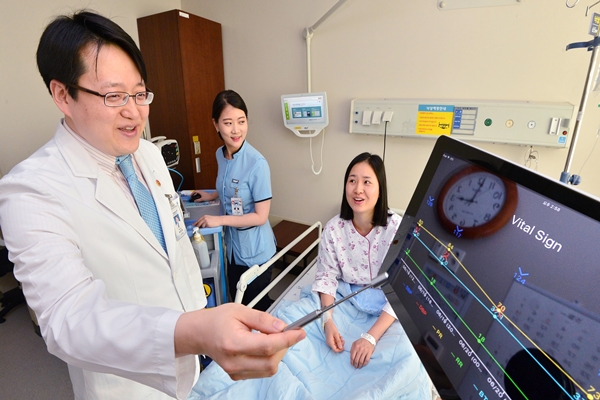South Korean Government is going to establish an integrated system that shares information of treatments from all hospitals in South Korea by 2018 at the earliest and it will also prepare a portal where one can check personal information on treatments and collaborative system between doctors. It is predicted that solutions and service markets will open up through this integrated management.
According to Ministry of Health & Welfare and Ministry of Science, ICP and Future Planning on the 20th, South Korean Government is going to establish a system that allows all hospitals and clinics to share their information on treatments by 2018. It is going to develop a system that is based on international standards and apply it first to large hospitals. It is also going to prepare a meta-data integrated saving place that acts as an intermediary of information.
Currently sharing of information on treatments between hospitals and clinics is limited. When patients get moved to different hospitals, they have to bring their CD (Clinical Documentation) or documents along with them. Although some top-class hospitals established such system, it is only an one-way service that goes from a first hospital to a third hospital. Not only is this inconvenient for patients, but there are also problems such as duplication of treatments and examinations. Actually in 2014, there were criticisms that $1.38 million (1.6 billion KRW) was wasted monthly due to duplications of CT and MRI.
This system that is going to be established by South Korean Government will be applied with international standards called ‘IHE Profile’ and ‘H7’. Standards for medical words will be applied and a function for forming a request for treatments will be connected to EMR (Electronic Medical Record) system. It is going to establish a meta-data integrated database (DB) so that information can be shared easily. By gathering basic information into one place, it allows hospitals to share information that they want more effectively and fast.
This system is going to be applied to large hospitals first. Up to 50 regional hospitals will be connected to each other and share their information. Ministry of Health & Welfare had carried out demonstration of this system starting with Seoul National University Bundang Hospital, Daegu-si, and Korea Workers’

Compensation & Welfare Service starting from last year and recently appointed Busan National University Hospital as a new base. South Korean Government is going to establish a system that allows 85 regional medical organizations to share their information and secure additional bases in next year by preparing supporting plans such as incentives.
If this kind of environment is established, system will be established by 2018.
“Most of medical organizations will share their information by 2018.” said a representative for National Information Society Agency (NIA).
When this system is established, it can reduce cost for treatments. According to Seoul National University Bundang Hospital, cost of treatments for patients reduced by 13% than before due to reduction of repetitive examinations and procedures of medical services. Medical organizations will strengthen collaborative network and support of fast medical services between first, second, and third medical organizations.
Digital healthcare markets, which had been stagnant due to variety of regulations, will become active again. If this business expands to all of South Korea, 3,000 or so hospitals in South Korea need to establish this system. As different medical platforms are unified, there needs to be variety of universal solutions.
“Medical solution industries had been begging for a system that can share medical information.” said a representative for NIA. “As medical information is shared and stored, variety of solution and service markets that are derived from this will develop abilities of digital healthcare by one step.”
A remaining problem is security. When this system is established, information will be shared through network. Meta-data, which is the back-bone of medical information, is also managed by Cloud. Unlike in the past when information is stored in a closed-door, there can be gaps in management. Security protocols of HL7 are also not perfect.
“Because security protocols are lacking in HL7, there are chances of forgery and alterations and there are a lot of issues with security regarding meta-data that is uploaded on Cloud.”
Staff Reporter Jung, Yangchow | jungyc@etnews.com